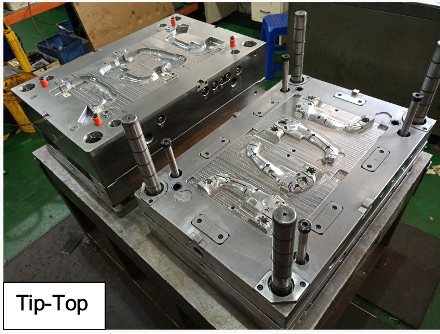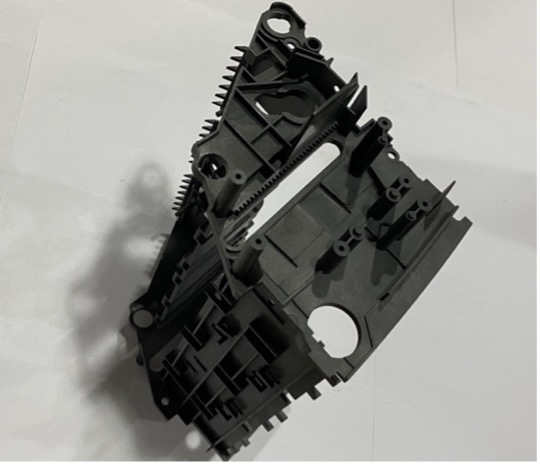What is OEM injection molding: overmolding?
Firstly, over the years, OEM injection molding has shown continuous development. With more than a century since its discovery, synthetic plastic is now among the most used materials in the production of goods and is present in practically all sectors.

If your company still doesn’t work with parts produced from the thermoplastic injection, then it’s time to change this scenario.
To help you make your decision, we have listed 4 reasons that will make you better understand this choice.
Why use incorporate thermoplastics in your production?
1. Versatility
Thermoplastics are materials that stand out for their great versatility. They can adapt to the most diverse uses. The OEM injection molding process allows the plastic material to take on diverse forms, ranging from plastic bags to airplane parts.
They serve as raw materials for numerous products and functionalities.
2. Reusable
The vast majority of polymers uses today have good reusability.
At a time when the excess of waste produced in the world discusses, this is a fundamental characteristic.
It is also worth remembering that in the OEM injection molding of thermoplastics it is possible to work without wasting raw material.
3. Live in constant development
Over the years, thermoplastics have shown continuous development. Not only are new materials discovered, but also the properties of existing ones are also constantly improved.
What’s more, your products will also follow this development and thus gain in quality over time.
4. It can be adapted to your needs
Currently, plastics are even used as substitutes for wood and iron in various sectors, such as civil construction, for example. If you need a part with a higher resistance index, you can opt for so-call reinforcing loads. Through rotational OEM injection molding, it is possible to achieve this objective and still produce materials with a sophisticated design.
Therefore, it is very difficult to find a need for its production that thermoplastics are not able to supply. For these reasons and many others, your company should think about parts produced from OEM injection molding.
Enjoy the benefits of this material for your production!
Did you like this article? Keep following us and learn more about the plastics industry
PRECISION INJECTION MOLDING METHOD
More details about this type of molding
Today, OEM injection molding is very often used in factories. This is done using advanced technology. First, molten plastic is poured into a special chamber. It can be cold or hot temperature. Subsequently, from it, through the channels, the heated substance passes into a heated mold. It makes either of steel or cast iron (this is very rare).
The force of pressure that applies in this process depends on:
- Chemical composition of the molten substance
- The configuration and wall thickness of the future molded part
After injection molding, the part is ejected out of the mold in a special way.
Technological requirements
The molten plastic that is poured into the mold can have a different movement pattern:
- Calm
- Active turbulence
- Dispersed character
In order to obtain molded parts of excellent quality, experts will control the following aspects:
- Speed
- Duration of the passage of molten metal into the mold
- Material temperature
- Special mold temperature
- What are the OEM injection molding and its walls made of?
- Area of ventilation ducts and their placement
All of the above standards always depend not only on what plastic is used in molding but also on what wall thickness the future product should have.
Technological moments that are observed during injection molding
Speed is an important aspect of this difficult OEM injection molding process. It must be strictly controlled. It is important to know that when it is too large, the important lubricant on the mold will erase – and the product will be impossible to get out of there.
In this case, the walls of the mold can begin to collapse from the high temperature of the molten plastic. The product will also deform. At the same time, when the material is fed very slowly, the surface of the future object will also be defective – it will become uneven.
Employees of the enterprise know that the optimal speed of OEM injection molding is from 10 to 50 meters per second. But everything also depends on the metal. For example, for steel and copper it is less, and for zinc and lead it is more.
Injection molding process
In production, a well-defined sequence of processes should be followed. First, before pouring the molten plastic, the mold is heated to the appropriate temperature for the material. The correct structure of the molding depends on whether the specialists adhere to the normalized temperature. That is, if everything is clearly executed, there will be no defects.

Consider the main temperature standards for plastics:
If the temperature is too high during the OEM injection molding process, the molten plastic can spread very quickly in the form and will get into the ventilation channels. As a result, there will be porosity in the molding, because it will boil due to the lack of air passing through it.
When molding under low pressure, the following conditions must be met
- Keeping the heat of the molten plastic entering the mold cavity by controlling the flow rate
- Creating a temperature gradient in the plastics flow in the direction from the mold surface to the middle zone of the plastics wall to ensure the crystallization of the molten plastics in a narrow molding layer
- Creation of excess pressure in the liquid plastic that filled the mold cavity to feed the crystallizing layers of the molding, both in thin and massive sections.
- Maintaining a smooth, strictly according to a given regime, increase in pressure in the crucible to prevent gas breakthrough from the crucible into the mold cavity.
Always make the right choice regarding pressure and crystallization
Properly chosen excess pressure and crystallization conditions make it possible to obtain molding without air-trap and shrinkage defects. These defects can only form if the overpressure is insufficient.
The density of the molding plastic is also favorably affected by the use of water-cooled in OEM injection molding, the workpiece then has a fine-grained structure and increased density, due to the narrowing of the solid-liquid zone in the hardening casting.

